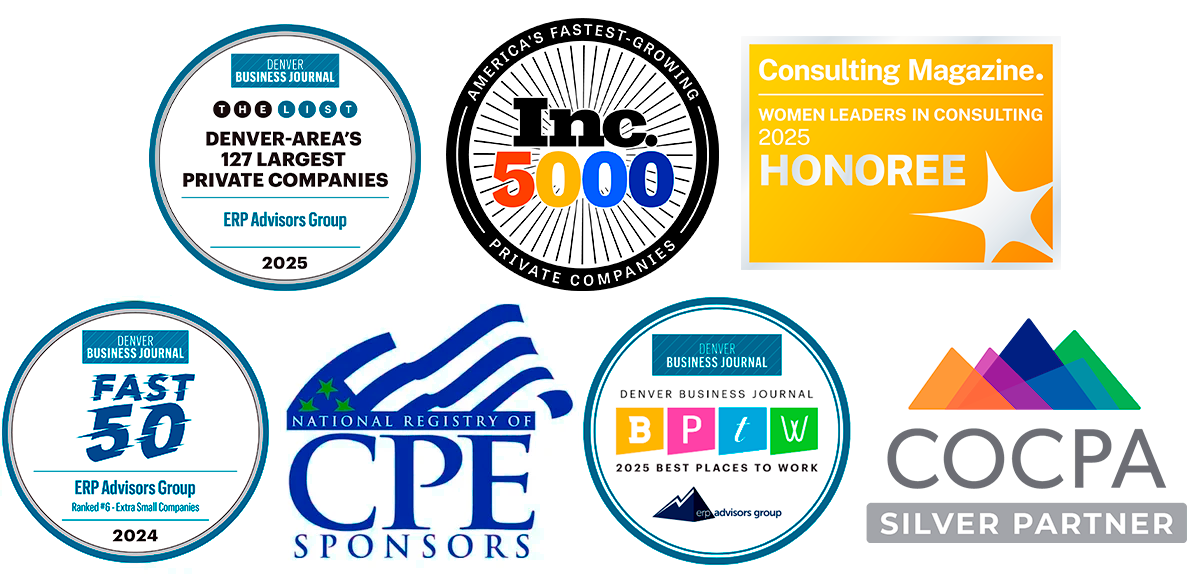
Records management systems are used by public safety agencies such as fire, police, and other groups to help them run their operations more efficiently. These records are often protected or regulated, and they may need to be publicly accessible. These factors can complicate implementations, thus increasing the need to avoid typical pitfalls.
3 Common Points of Railure with Records Management Systems
Here are some of the most significant problem areas our clients have encountered. Having this information can help decrease the risk of an RMS failure.
1. an Uninformed Selection Process
The most significant RMS challenges occur during the software selection process. Public safety agencies can fall into the trap of looking at the market and quickly identifying a solution that is specifically tailored to organizations in the same field, though their own requirements are much more specific. You do not want to find incompatibilities and wasted resources after you are already several months deep into an implementation.
Knowledge gathering is necessary at the very beginning of these projects, due to regulations, IT resources, gap analysis, scope, organizational requirements, and software capabilities. We have some great material on the process for Records Management System replacement to help you take the right approach. This article will focus on some of the assumptions and knowledge gaps, which many organizations fail to identify during their initial software selection process.
Defining Scope: Do not assume you only need to replace the RMS capabilities
You may be operating with some capabilities in your current records management system, while others operate through a separate application. Many organizations start by assuming they will replace the current RMS capabilities when there might be a great opportunity to replace everything with one RMS, eliminating a lot of complexity.
We advise beginning at the top-line level to understand those modules currently use or need. These might include:
- Incident reporting
- Patient Care Reports/Medical Reports
- Training program, including certification and documentation
- Life safety (scheduling inspections, pre-plans)
- Scheduling and Rostering
There are solutions which contain all of the above. Once you know the capabilities you want, be aware that each one of those areas can have specialized needs, determining which records management software would work for your organization. For rostering, you might be doing a 48/96 schedule, or when calculating vacations, you might need to consider seniority or overtime. Each capability needs to have the right tools and features, while being able to communicate with other applications.
Additional top-level software considerations
- Do you need a mobile-centric solution?
- Are you looking for Software as a Service (SaaS) or on-premise RMS?
2. Change Management Risks
Changing your records management system will impact the entire organization. It will change how workers find and document information. Change management is important because it ensures that everyone will be able to perform their jobs during the transition. Organizations tend to understand they need to pay attention to this transition period; however, there are some mistakes which are easily avoided.
How to avoid change management problems
- Be transparent with workers about your RMS change by notifying everyone as soon as possible in the process.
- Create a dedicated team of subject matter experts (SMEs). This team will know the new tools, as well as the old. They will be the go-to individuals for operations people. Make sure that everyone in the field has a contact point SME.
- Put into place a concise training program to properly relay information regarding use of the tools per your regulations and procedures way.
- Training needs to include devices that will be used in the field to make the transition as seamless as possible
3. Data Migration
Public safety departments are required to maintain very large amounts of data; however, many continue to use older tools or even paper. Regulations might mandate data be kept for specified periods of time, or that certain information be made publicly available. These factors can complicate the process of extracting data into a usable format moving forward.
Data should be considered during software selection because it can stall projects or increase the resources required to complete projects to such an extent as to cause your new records management software to fail, especially in cases where the current system does not have good exporting, reporting, or database features.
No matter how simple the implementation seems, you need to make sure you understand the level of compatibility between old and new systems. Even different versions of the same software can be incompatible due to changes in regulations. Do not take data migration for granted.
Take a Deeper Look at Data Migration During RMS Selection
During the software selection process, take the time to identify your organization’s reporting needs. Understand the level of detail required. Understand any format changes between old and new systems, and create a plan for handling those discrepancies. You might use databases that are external to the new system but which can still be accessed by the new product. There are any number of potential solutions to data challenges, and the earlier you think through the solution, the more efficient and effective these solutions will be.
Notes on Starting a New RMS Implementation
There is certainly a lot to know about records management software before beginning a new implementation; this article provides only an outline. Significant knowledge regarding technicalities, regulations, and your unique organization should be taken into consideration as early as possible. Implementations can be delayed for months or even fail completely when individuals with the requisite knowledge are not available when they are needed. These projects are not the kind where you can hire someone from outside the organization to be a part of your permanent staff. We strongly encourage you to plan ahead, so that you know there will be no mistakes.
We have helped many organizations implement records management systems. If you are in the emergency business, we know your plate is full. We would love to take you through the process, ensuring a successful and timely completion.
Thank you everyone for joining us for today's call: Pitfalls to Avoid When Implementing Your Records Management System. Shawn Windle is one of our speakers today.
Shawn is the Founder and Managing Principal of ERP Advisors Group based in Denver, Colorado. ERP Advisors Group is one of the country's top independent enterprise software advisory firms. ERP Advisors Group advises mid to large sized businesses on selecting and implementing business applications from enterprise resource planning, customer relationship management, human capital management, business intelligence, and other enterprise applications which equate to millions of dollars in software deals each year across many industries.
Quentin DeWitt is also a speaker with us on today's call. Quentin has been in the information technology business for over 20 years. He has led teams as a director of IT, brought innovative products to market as a product manager, and led large teams as a director of technical support.
Today, he provides leadership and guidance to our consulting team through a wide variety of technical knowledge, experience, and skills. He manages the team on needs analysis, software selection, and implementation services for our fire department clients, including their RMS, scheduling, CAD, logistics, HR, payroll and life safety.
On today's call, Shawn and Quentin will discuss the most common points of failure when implementing your new records management system and how to avoid them to ensure your implementation will be a success.
I'll pass it on to Shawn and Quentin.
Shawn Windle: Okay, thank you, Juliette. We appreciate you all jumping on the call today.
As Juliette said, we're going to talk to issues specifically around the records management system that public safety agencies, whether it's fire police or other groups implement to basically manage their processes and the data that they use to run their operations on a daily basis and this is a very diverse area.
So, I'm excited to have Quentin on the phone who is a consulting manager here with ERP Advisors Group.
Quentin does most of our work with — specifically with fire departments as well as other departments we work with.
But Quentin has just a really great, extensive knowledge and very practical experience on what it takes to really get a system that we've gone through a whole selection process with to make sure it's the exact right fit, but then getting it implemented correctly.
So, Quentin, I'm going to ask you a few questions about your experiences with implementations and would love to get your insights.
Quentin DeWitt: That's great.
Shawn: Perfect, so what do you think are the really key pitfalls that that most organizations and departments — what do they fall into like? What are the things that they really run into that that that really prevented them from having a successful implementation? Let's start there.
Quentin: Well, I would say probably the most major item is an improperly run selection process.
If they haven't gone through the selection process to make sure they have a very firm understanding of what they're looking for in the industry, they will potentially select a tool that doesn't meet all of their needs, doesn't fit and bridge the gaps that they're experiencing with their current system, which is a reason for replacing it in the first place, so that's probably the major issue.
There are several others, such as migrating information from your old system into the new, knowing what scope you have there, how far back you have to have the detail level, and we're talking about records that are potentially protected — HIPAA regulated or may need to be publicly accessible, so these are often very important.
Another major factor is change management — anytime you're taking out this core system for group like this — it is a huge change and really impacts the entire organization from how they look up their information, the reports, how many incidents were run of what type, investigations — there are so many different parts and pieces to that that not having that information can lead to large problems.
So, change management is a big deal. Data migration is a big deal. Having the right software is a very important factor as well as there are many other parts to a successful implementation.
But those are sort of three major areas.
Shawn: Perfect, okay. I want to drill down on two of those specifically which is the change management risks as well as selecting new software and a little bit more around the software types that you see public safety departments going through.
But let's talk about change management first.
So, when you think about an implementation for public safety, let's take a fire department — so, you have a lot of users, a lot of lineman, you have a lot of EMS, you have a lot of firefighters that are changing software and they're very focused on outcomes — patient outcomes, specifically on the side of saving people's lives and preventing fires.
And oh, by the way, we're going to give you new software. So, what are some successful strategies that you've seen for managing that change with the software application itself? We're making it easier for those guys to do their job.
Quentin: Well, definitely — so there are a lot of factors. Obviously a — making them aware as soon as possible in the process, so don't keep them in the dark as far as the overall operations of your department go.
Make sure that they know the change is coming. Make sure you have a dedicated team that become your subject matter experts who know the new tools as well as the old tools inside and out.
These people will then turn out to be the go-to individuals for the line of the operations people — anyone who's had this process changed for them in the field — so that they always have a contact point.
Then your next step is really to make sure you have a great and concise training program in place to properly relay all of that information in a concise per your regulations, per your procedures way. Because every department while similarly designed and structured as far as what you're doing — you're putting out fires or handling emergencies, you're helping a patient with whatever is coming up with them, you're handling an accident on the highway — whatever your department is focused on.
It's different for every department, so your procedures, how you do it is very important to have put in place. And then you train the tool with those procedures as one for your operation side. So, that's another change management.
Another thing to think of is sometimes when you're changing tools, there's the change management side of the hardware platform, or the technology that's involved with it. So, you need to make sure that you have the devices that will be used in the field or at the office readily available when relaying the information to your operation. That way they're training on the devices, they're training on the software, they have the right procedures and it can make it much smoother when it's rolled out into the field for go-live.
I think that covers it in a nutshell.
Shawn: I think that's great. That makes sense.
And then one of the other points you said about avoiding pitfalls for an RMS implementation was making sure that you selected the correct and the best fit new software.
So, unlike some of the other industries that are out there, it seems like public safety has a lot of different varieties of solutions that make up an overall records management systems.
Like for jails — for some of the counties and cities and other municipalities we've worked with — there's the jail management system. But then even fire has different types of patient care reporting.
But why don't you talk generally about the different types of software solutions that make up an overall RMS and what are some of the maybe a best of breed or all-in-one strategies that you guys follow to make sure that you get the right app?
Quentin: Okay, well there are, as Shawn mentioned, there are a number of areas that are contained generally within a full RMS scope or record management system.
So, depending upon what you're using today, you may have in that records management system just your infers reporting, just putting in incidents, entering incidents, and that's all you do in your records management system.
Or the scope may expand to your PCRs, patient care reports — medical reports when you're dealing with the patient if your department handles that side. Sometimes you do basic, sometimes you do advanced — depends on the level you're working with there. So sometimes that's contained in your RMS system.
Additional to that, you may have your training program and all your certifications and all your documentation for your SOPs or standard operating procedures in your RMS system, so training can be a factor there.
You also have life safety — your building department or your fire inspectors may be integrated into your RMS system, so you're using it for scheduling inspections. You're also potentially using it for preplan. You may have all of your preplan information integrated into your RMS. So, there are a lot of different factors there.
And then rostering is a big one. Scheduling and draw strength of your different shifts or cruise who's on what when they're getting traded, vacation time — this all is very strategic to fire operations.
And so having that in your RMS connected with all that other information is quite important, and that's just the top line level of digging into that.
So, when you're talking about a new RMS system, you have to really identify which areas you're going to contain within your RMS.
And just because you may have been operating with some of them currently in there and others in a separate application may not be a good reason to continue with that operation. You may want to consolidate that all into one tool.
And there are even tools that do all of that scope. There are different platforms that they can work off. Some are more mobile centric or software-as-a-service so they live in the cloud versus in your own servers on-site versus an on-site or on-prem solution that you have to have an internal IT team to manage.
So, the selection process can be very critical, and each one of those areas may have very specialized needs to be covered for rostering, different schedules are very common — you might be doing a 48-96 or modified Kelly, or there's all sorts of different scheduling that can go into that with different vacation schemes, difference of seniority — when someone needs a trade or overtime that all factors and making sure you have the right tool with the right features that can communicate to any other tools you have is very important, and that's all in the selection.
Shawn: Perfect. Okay, so there's a lot to really consider around what's the right software — and if you don't get the right software upfront then you probably run into a lot of problems with implementation.
Quentin: Absolutely.
Shawn: Got it. Okay, so then one other area that you mentioned is data migration. So, why don't you talk to some of the pitfalls that you've seen specifically with public safety departments as they've run into data migration issues and how to avoid specific issues around data migration?
Quentin: Well, in the fire industry, a lot of organizations are on older tools or even potentially on paper.
So, — and they are required to keep a very large amount of data available, whether they're working on just the fire side or the EMS side, there are a lot of regulations that surround these.
Some of it has to be public. They have to keep it for so long, and if they're in a current tool that doesn't have a good export feature or good reporting capabilities or a nice database setup, you can run into situations where it's very hard to extract that data into a usable format going forward.
So, some of the pitfalls that come up around this are not planning ahead of time, not understanding your current system, what you need to have already, what level of detail you need to have.
You may just need to keep the information and not have it accessible. You may need to have it very accessible with customized reporting down to a detailed level on a per field like run times or on scene times, all that information. So, your organizations needs as far as reporting can be a big factor in data migration.
There's also changes in regulations on the ePCR side with NEMSIS version two or version three, a lot of that information isn't compatible, so if you're moving from an old system like a NEMSIS version two platform and trying to migrate that data into a new platform that's NEMSIS version 3, the fields don't line up. So, you have to think with that ahead of time and understand you're going to be storing this in an external database, or you're going to keep these reports in an online location so that they can be accessible, but they're not actually stored in a new product.
So, a lot of data migration considerations there, and it's always good to be thinking with that upfront, potentially even before you go to a new tool, because that selection process needs to include the data migration.
So, I think that speaks about it in a general fashion, and there's a lot more to be found out if you're going down this road.
Shawn: Perfect. Okay, so then really at the at the end of the day, if there's one thing that you wish that every client that you've worked with around records management system, whether it be fire or police or other types of RMS for public safety, what's the one thing during the implementation that you wish they would have known beforehand that would have saved a lot of problems later?
Quentin: I would say how many resources that it will take internally to do it.
It is not something that you can just hire someone to do outside of your organization. You can get a lot of help. We help organizations put these things in place. But there are a ton of internal resources that are required who know their jobs as a part of your organization that will need those resources to put it in place properly.
And we know you're in their emergency business. We know your plate is full, so planning ahead of time for those resources to be available for the implementation is probably my best piece of advice to organizations that are making this change because if you don't have those in place, you will fail. There will not be enough information.
It will extend the implementation months and months of and possibly even fail completely because the people that know the information and know how the organization runs are not available to put it in place.
Shawn: Well, good, I think that's a good, bulleted list if you will of some key things to keep in mind on pitfalls to avoid when implementing an RMS.
We've done this a lot as an organization — we've worked with many agencies and can help companies and departments and organizations to avoid not just these issues, but other things that come up too and would love the opportunity to do that.
So, we appreciate your time and listening to our information today.
Shawn, Quentin — thanks very much, appreciate that. And thank you everyone for joining us for today's call. As Shawn said, please let us know if we can answer any questions that you might have.
Our next call is August 14th: Creating an Omnichannel Experience for your Wholesale or Manufacturing Business.
If you'd like to join us for that, please head to our website erpadvisorsgroup.com for more details and to register.



